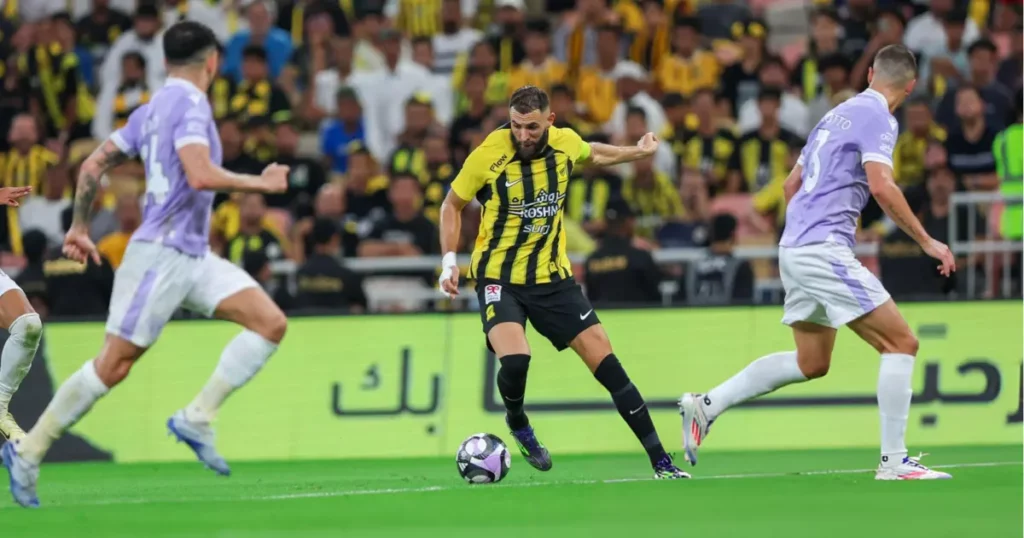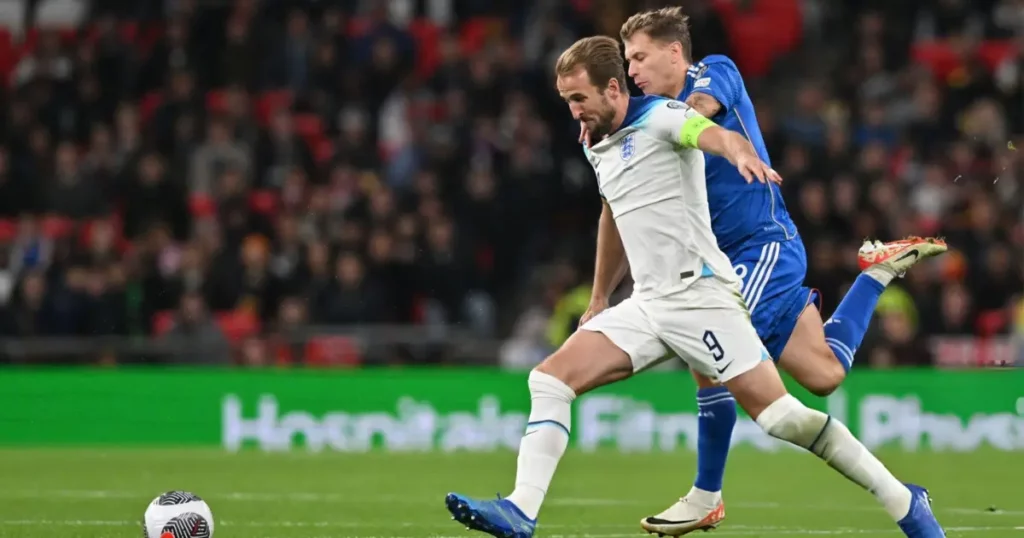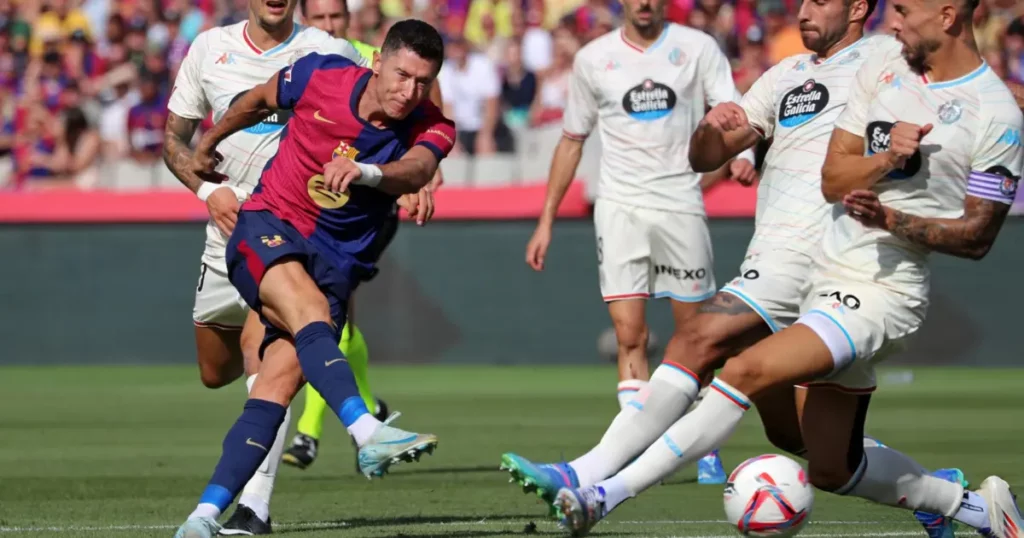Role of Striker In Soccer: Everything You Need to Know About the Position
We are already familiar with the various types of Soccer positions since we have extensively covered all the major positions in the ‘Understanding Soccer Positions: A Full Breakdown and Explanation’ article. The act of scoring goals has the utmost importance, after all, it is what decides the winner of any soccer match. The side with the most goals scored ultimately is crowned as the winner, thus making it the most common yet important term in this sport.
After understanding the Central Attacking Midfielder (CAM) role, we will move further upward on the pitch to a more advanced and attacking role which is a striker position in soccer and also commonly referred to as the Centre forward, Attacking forward and Goal scoring forward or Number 9s – due to the traditional association of number 9 shirt with strikers.
In this article, we are going to explain the main responsibilities and the role of the Striker position in soccer. Moreover, we’ll be discussing the key characteristics and skills which required to play and excel as Goal scorers on the soccer field. After this, you’d get an overview of the most demanding and fascinating position of the game.
What is the Striker Position in Soccer?
The Striker basically plays at the forefront of the attack in the most advanced position and is responsible for finishing the play, providing assists and scoring goals for his team. They play ahead of midfielders, defenders and goalkeepers and in between the two defenders of the opposition or even position around the backline.
Though soccer is a team sport and every position has its own importance and role, yet the striker position is the one which attracts the most attention and takes centre stage in the sport. Due to the fact, that it’s their contribution which decides the winner and separates the teams. Also to be noted, any player can score in soccer however, it’s typically associated with the team’s centre-forward or Central Strikers.

Johan Cruyff once said, “To win you have to score one more goal than your opponent.” and Soccer manager Pep Guardiola stated, “The most difficult thing in football is to score a goal.” These quotes pretty much explain the importance of the striker’s role in soccer.
The centre forward role might sound simple, but, that’s not the case they play a much more significant role and aren’t only focused on scoring goals, especially in modern soccer. The striker position has evolved requiring versatility along with a series of skills coupled with technicality and quality.
No matter, what style of play: attacking, defensive, low-block, tiki-taka or counter-attacking a team operates Soccer formations: 4-3-3, 4-4-2 or 4-2-3-1 A striker is required to lead the attacking line, create and finish the chances to net goals. Also, press the opposition defenders to create more pressure to win the ball.
A striker needs to be dynamic in nature to adapt according to the needs of the team and as per the way of opposition’s style and game plan. There are various variations of this position such as False number 9, out and out striker, Pocher and Target Man wide forward and much more, that we will be covering ahead separately.
Also Read: Top Most Popular and Widely Used Soccer Formations
Key Characteristics of Striker in Soccer
Now, let’s understand what are the specific skillset and key characteristics any Centre-forward must possess in order to master the Striker position. Irrespective of the role of number 9, these are certain abilities a striker needs to acquire to function effectively. Modern-day strikers such as Karim Benzema, Robert Lewandowski, Erling Haaland and Harry Kane have mastered these attributes in their games.

Finishing: Finishing and shooting are the most vital and primary attributes of strikers’ work as they are tasked to net goals and pose a threat to the opposition’s goalpost. Thus, they should be able to hit the ball with enough power and precision to beat the keeper from anywhere around the 18-year-old box.
A quality striker has to be clinical in finishing be it from close ranges to crowded areas inside the box, or from acute angles, to shooting low shots and tap-ins and chipping the ball over the defenders and keeper.
Agility: Alongwith clinical finishing skills, agility is another essential attribute of a striker’s game. It allows them to quickly change directions and shift their body movements to beat the defenders, navigate through crowded zones in order to move to free space and meet the passes or crosses with their quick movements. It also helps to scatter the defence line to create space for midfielders.
Composure: Strikers are generally man-marked by centre-backs who remain surrounded by defenders within the box. Composure helps to act calmly during high-pressure situations, it also helps in shooting especially when opponents are rushing towards the ball, keeping the ball in possession, controlling and taking touches before taking a shot and a penalty kick.
Intelligence: Being a striker is much more than just scoring since the forwards play in advance zones and are often surrounded by defenders which makes it more difficult to operate within closed spaces. That’s when game intelligence comes into play. Knowing when to hold the ball and slide it toward teammates, in link-up play and creating chances to make late runs and well-timed through balls and dummy runs to withdraw defenders to create space behind are important aspects of their game which requires a high level of intelligence to execute in real-time.
Technicality: It’s the most basic attribute of any professional soccer player, as they should be technically sound without it one may struggle to cope with the standard of play. And particularly for Centre-forward to receive passes, take touches, dribble, finish and make passes upfront.
Physicality: Physical strength is essential in hold-up plays as it’s an important aspect of any centre-forward’s job up front to keep the defenders away from reaching the ball by shielding their body. Physicality helps in winning aerial duels, headers and challenges. Strikers with less physicality might get dispossess after receiving strong challenges.
What are the different Types of Strikers?

A striker position is a broad term in the soccer position which includes various other positions which can be categorised according to their purpose within a tactical setup and formations. Here are some of the most used variations of striker position in modern times
Target Man: An orthodox striker also known as number 9’ plays a more of a traditional role with scoring goals and hold-up plays, exerts a strong presence with physicality and meets the end of crosses and passes along with phenomenal finishing and shooting ability.
False Number Nine: A false number nine acts as a mobile striker with more involvement in the play. They tend to drop deep in the midfield for link-ups and one two to combine with midfielders to open up the spaces and make late runs into box to score goals.
Pocher: A goal poacher uses his clever movements and high game intelligence combined with clinical finishing within close ranges. They are experts in tap-ins, rebounds and blind runs to move to goal-scoring positions swiftly.
Second-striker: A second striker often plays behind the Number nine, it is quite similar to what CAM central attacking midfielders do sitting in between midfielder and attack. They drop to create goal-scoring opportunities and make assists.
Best Modern-Day Strikers in Soccer
| Name | Clubs | Nation | Goals for Club | Goals for Nation |
| Erling Haaland | Manchester City | Norway | 232 | 31 |
| Harry Kane | Bayern Munich | England | 353 | 66 |
| Cristiano Ronaldo | Al-Nassr | Portugal | 763 | 130 |
| Robert Lewandowski | Barcelona | Poland | 572 | 83 |
| Karim Benzema | Al-Ittihad | France | 434 | 37 |
FAQ
Q. What is the role of the Striker position in soccer?
The primary role of the striker in soccer is to score goals and provide assists while playing up front in attack.
What is the difference between a Centre-forward and a Winger?
Wingers generally play wide area of the pitch, whereas Centre forwards operate in the centre in front of the goal.
Which player has scored the most goals as striker?
Al-Nassr star Cristiano Ronaldo has the most goals in the soccer history.
